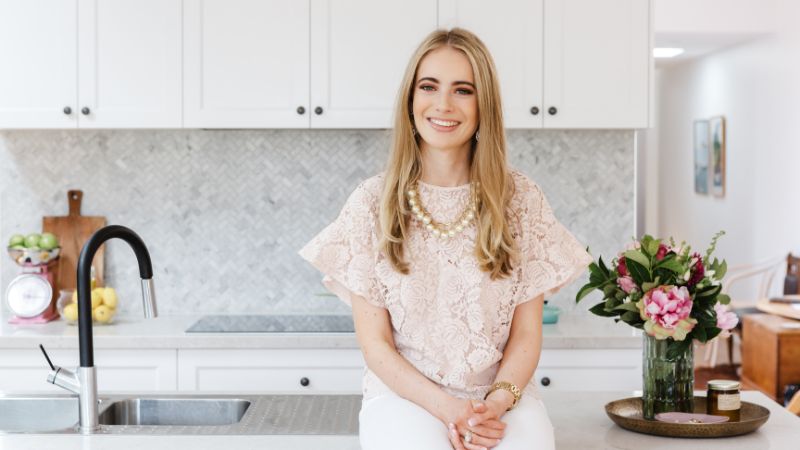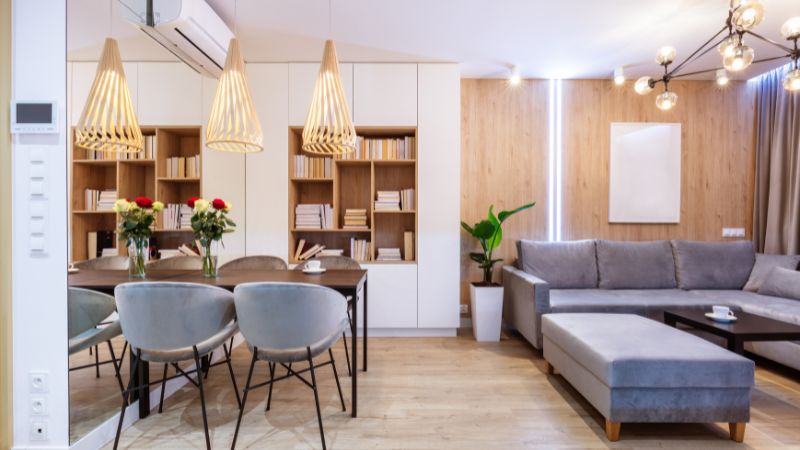How To Choose The Right Interior Designer For You – Choosing the right interior designer is a crucial step in transforming your space into a reflection of your personality and lifestyle. Whether you’re redesigning a single room or revamping your entire home, finding a designer who understands your vision is essential. The process involves more than just selecting someone with a good portfolio; it requires finding a designer who aligns with your tastes, budget, and communication style. In this guide, we’ll explore key factors to consider when selecting an interior designer, such as their design approach, experience, and compatibility with your project. By taking the time to carefully evaluate your options, you can ensure that your home will be beautifully designed and uniquely yours.
How To Choose The Right Interior Designer For You
1. Define Your Style and Vision
Before you start searching for an interior designer, it’s essential to have a clear understanding of your personal style and vision for your space. Browse through magazines, Pinterest, and design websites to gather inspiration and identify the styles that resonate with you. Knowing whether you prefer modern, traditional, minimalist, or eclectic designs will help you communicate your preferences effectively. When you approach a designer with a well-defined vision, it ensures that you both are on the same page from the beginning, leading to a more cohesive and satisfying result.
2. Set a Realistic Budget
Determining your budget is a critical step in the process of hiring an interior designer. Interior design services can vary widely in cost, depending on the designer’s experience, the scope of the project, and the materials used. Having a clear budget will help you narrow down your options and prevent misunderstandings later on. Be upfront about your budget constraints during your initial discussions with potential designers, so they can tailor their approach to suit your financial limits. Remember, a good designer will maximize your budget by providing creative solutions that align with your goals.
3. Research and Gather Recommendations
Once you’ve defined your style and budget, start researching potential interior designers. You can gather recommendations from friends, family, or colleagues who have worked with designers before. Online reviews, design blogs, and social media platforms like Instagram and Houzz are also excellent resources for finding reputable designers. Look for designers with a strong online presence, positive reviews, and a portfolio that matches your style. Taking the time to research thoroughly will save you from unnecessary stress and help you find a designer who is both talented and reliable.
Also Read:- Small Apartment Decorating Ideas on a Budget
4. Review Portfolios and Past Projects
Reviewing a designer’s portfolio is one of the most important steps in the selection process. A portfolio showcases a designer’s range, creativity, and attention to detail. Look for consistency in their work and see if their projects resonate with your style and vision. Pay attention to the details—how they use color, the balance between functionality and aesthetics, and their ability to create cohesive spaces. Don’t hesitate to ask for references from past clients to gain insight into the designer’s work ethic, communication skills, and ability to stay on budget and schedule.
5. Schedule an Initial Consultation
An initial consultation with a designer is an opportunity to gauge their understanding of your needs and to see if there’s a good rapport. During this meeting, discuss your project in detail, including your goals, style preferences, budget, and timeline. A good designer will ask thoughtful questions and offer preliminary ideas that align with your vision. Pay attention to their communication style and whether they listen to your input. The consultation should leave you feeling confident that the designer understands your goals and can translate them into a beautiful and functional space.
6. Assess Communication Skills
Effective communication is key to a successful interior design project. Your designer should be someone who listens to your ideas, understands your needs, and provides clear and timely updates throughout the project. Miscommunication can lead to delays, budget overruns, and design choices that don’t align with your vision. Make sure the designer is open to your feedback and can explain their ideas and decisions in a way that makes sense to you. A designer who is responsive and transparent in their communication will help ensure a smooth and enjoyable experience.
7. Consider Experience and Expertise
Experience matters when it comes to interior design. A designer with years of experience has likely faced and overcome various challenges, giving them the expertise to handle complex projects. Experienced designers also have established relationships with contractors, suppliers, and other professionals, which can be beneficial in getting the best deals and ensuring quality work. When evaluating a designer’s experience, consider the types of projects they have worked on, their familiarity with your preferred style, and their ability to manage budgets and timelines effectively.
8. Evaluate Their Problem-Solving Skills
Interior design projects often encounter unforeseen challenges, such as structural issues, material delays, or budget constraints. A good designer should be able to think creatively and provide practical solutions to these problems. During your initial meetings, ask the designer about challenges they’ve faced in past projects and how they resolved them. Their responses will give you insight into their problem-solving skills and their ability to stay calm and professional under pressure. A designer with strong problem-solving abilities can turn potential setbacks into opportunities for innovation.
9. Understand Their Design Process
Every interior designer has a unique approach to their work, and understanding their design process is crucial to ensuring a successful collaboration. Ask the designer to walk you through their typical process, from the initial concept to the final installation. This should include how they gather inspiration, create design concepts, select materials, and manage the project timeline. Understanding their process will help you know what to expect at each stage and ensure that their workflow aligns with your expectations. A transparent design process fosters trust and keeps the project on track.
10. Trust Your Instincts
Lastly, when selecting an interior designer, go with your gut. The rapport you share with the designer is just as vital as your credentials, experience, and portfolios. It’s crucial that you feel at ease, understood, and respected because you’ll be collaborating closely with this person. It’s acceptable to keep looking if something about your interactions seems strange. Selecting the right designer will not only help you realize your vision, but also ensure that the process is stress-free and enjoyable from start to finish. You’ll find the ideal designer for your project if you follow your instincts.
Conclusion
Selecting the right interior designer can make all the difference in creating a space that truly feels like home. By considering factors such as experience, style alignment, and communication, you can confidently choose a designer who will bring your vision to life. Remember that a successful partnership is based on trust, common goals, and open communication. Invest time in finding the right designer, and you’ll enjoy a beautifully crafted space that meets your needs and exceeds your expectations.
FAQs
What should I look for in an interior designer?
Look for a designer whose style matches yours, has strong communication skills, and a portfolio that aligns with your vision.
How do I know if an interior designer is a good fit for my project?
Assess their experience, previous work, and how well they understand your design goals during the initial consultation.



